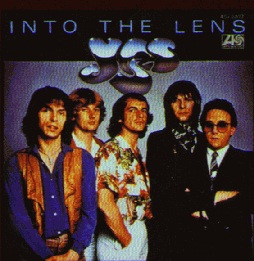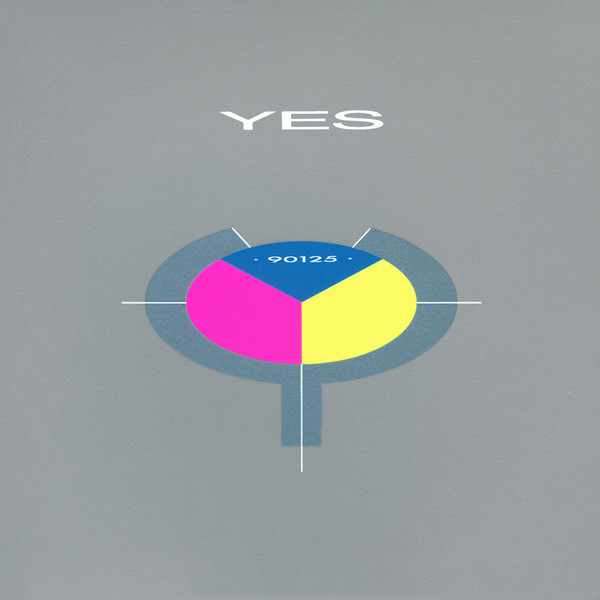During the 1970s, progressive rock powerhouse Yes had gone through six different lineups and three different keyboardists. Although Yes was perhaps as famous for their numerous personnel changes as for their music, their 1980 lineup was by far the strangest. Having fired founding vocalist Jon Anderson and accepted the resignation of longtime keyboardist Rick Wakeman, the remaining members (Chris Squire, Steve Howe and Alan White) decided to replace them with The Buggles (Trevor Horn and Geoff Downes).
Yes, those Buggles; the one-hit wonders who gave us “Video Killed The Radio Star.” Although the half-Yes, half-Buggles lineup lasted less than a year, it managed to produce one album, Drama, which, despite the former pop success of its new members, was “progressive” in the old Yes sense, sounding surprisingly similar in tone to more recent albums and very little like the New Wave of The Buggles or former Buggles pal Thomas Dolby.

Although the album was fairly well-received critically and was popular enough to climb to #18 on the album charts, there was an enormous backlash among fans loyal to Anderson and Wakeman. Due to this, and to the lukewarm reception of their 1980 live album YesShows (which featured, oddly, neither any of the group’s biggest hits nor anything from their latest album), the band decided to call it quits for good.
At least, until 1983. While Geoff Downes and Steve Howe were busy with Asia, Chris Squire and Alan White were trying to form a new band with Led Zeppelin alumni Jimmy Page and Robert Plant called XYZ (as in ex-Yes & Zeppelin). After that project fell through (Plant, apparently, never even showed up for the jam sessions), Squire and White regrouped with South African singer/guitarist Trevor Rabin, Trevor Horn and founding Yes keyboardist Tony Kaye (who had been fired to make room for Wakeman back in 1971.)
The Dueling Trevors
Initially to be called Cinema, the band ran into trouble when discord began brewing between the two singing Trevors. Initially booted from Cinema altogether, Trevor Horn shortly returned to the band in the role of producer. Although Rabin and Squire were sharing vocal duties, it was decided that they hire an additional vocalist, and they selected none other than Jon Anderson.
Shortly after Anderson joined Cinema, the band changed its name to Yes. (Rabin, however, was not happy about the name change: “I hadn’t joined the band as Steve Howe’s replacement.” Nor was Howe, after hearing that “his” band, Yes, had reunited without him.)

In late 1983, with the new lineup of Anderson, Rabin, Squire, White, Kaye and Horn (as producer) established, the new Yes released 90125, an astounding departure from the band’s “progressive” style of the ‘70s. Featuring the #1 smash “Owner of a Lonely Heart” and the overdub- and drum-machine-heavy “Leave It,” 90125 had a decidedly “80s” flavor to it. While complex time signatures and Anderson’s ethereal lyrics were still to be found, the songs on 90125 were nonetheless just plain catchy in a way never before heard in a Yes album. “Owner of a Lonely Heart” in particular showcased Horn’s newly discovered studio tricks and Rabin’s hard-driving guitar in announcing Yes’ embrace of the new decade.
As Yes toured in support of 90125, Trevor Horn spent his time testing out his producing skills on other bands, such as The Art Of Noise, Frankie Goes To Hollywood and Foreigner.
Another Live Album
Unfortunately, it took Yes nearly four years to follow 90125 with another studio album. To bridge the gap, in 1985, they released 9012Live: The Solos, which was inexplicably short and included only two full-length songs: “Hold On” and “Changes.” Although perhaps “Owner of a Lonely Heart” and “Leave It” didn’t lend themselves as well to live performances, their absence no doubt hurt sales of the album.
In the fall of 1987, Yes returned with Big Generator. While featuring several great pop songs, including “Love Will Find a Way” (originally written by Rabin for Stevie Nicks but “stolen” by the band) and “Rhythm Of Love” (both Top 40 hits), Big Generator was generally perceived as less compelling than 90125, and at just eight songs long, it was a surprisingly small output for an album four years in the making.

Shortly after the Big Generator tour, Anderson left to form Anderson Bruford Wakeman Howe with his former Yes bandmates for a 1989 album and tour. Meanwhile, Rabin, after releasing a solo album (Can’t Look Away), rejoined Squire, White and Kaye, who had begun collaborating with singer/songwriter Billy Sherwood with the idea that he might replace Anderson on the next Yes album. (Producer Trevor Horn was no longer involved with Yes at this point, having been fired during the Big Generator sessions.)
Yes vs. Yes
The end of the decade saw the Squire/Rabin/White/Kaye faction involved in legal battles with Anderson, Bruford, Wakeman and Howe over to what degree the latter could advertise themselves as “Yes.” However, once the “real” Yes (Squire et al) were signed to Arista (ABWH’s record label), fences were quickly mended and 1991 saw the release of an album (Union) and world tour featuring all eight musicians.
Another milestone in 1991 was the release of a four-disc boxed set, YesYears, featuring songs from the band’s beginnings through 1990. The last of the four discs is dedicated to the band’s ’80s work, and includes outtakes and alternate versions from the Cinema sessions.
Since 1991, Yes have continued to record and perform in varying lineups. In 1995, Rabin left for a career scoring films, and Wakeman and Howe rejoined.

Leave a comment